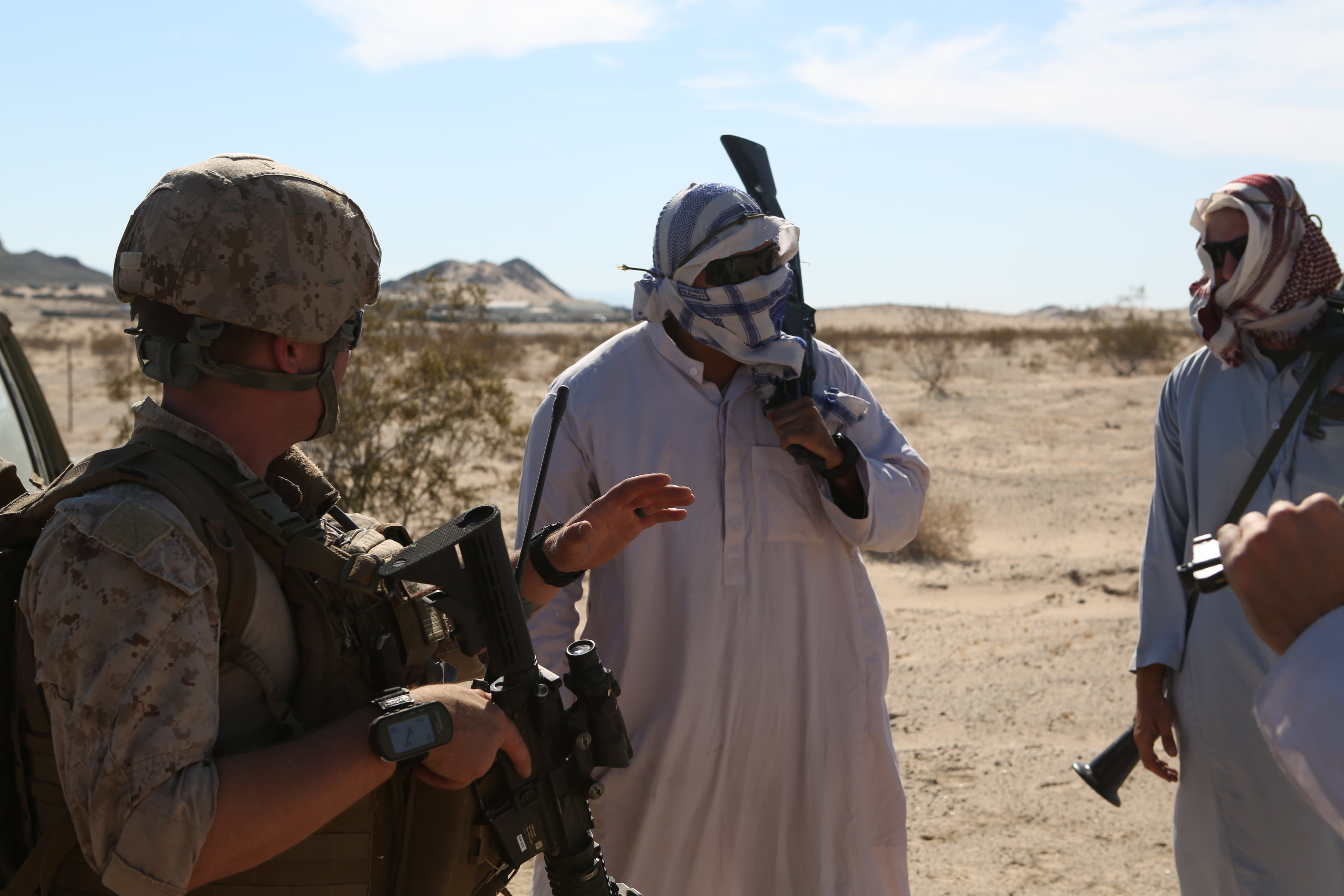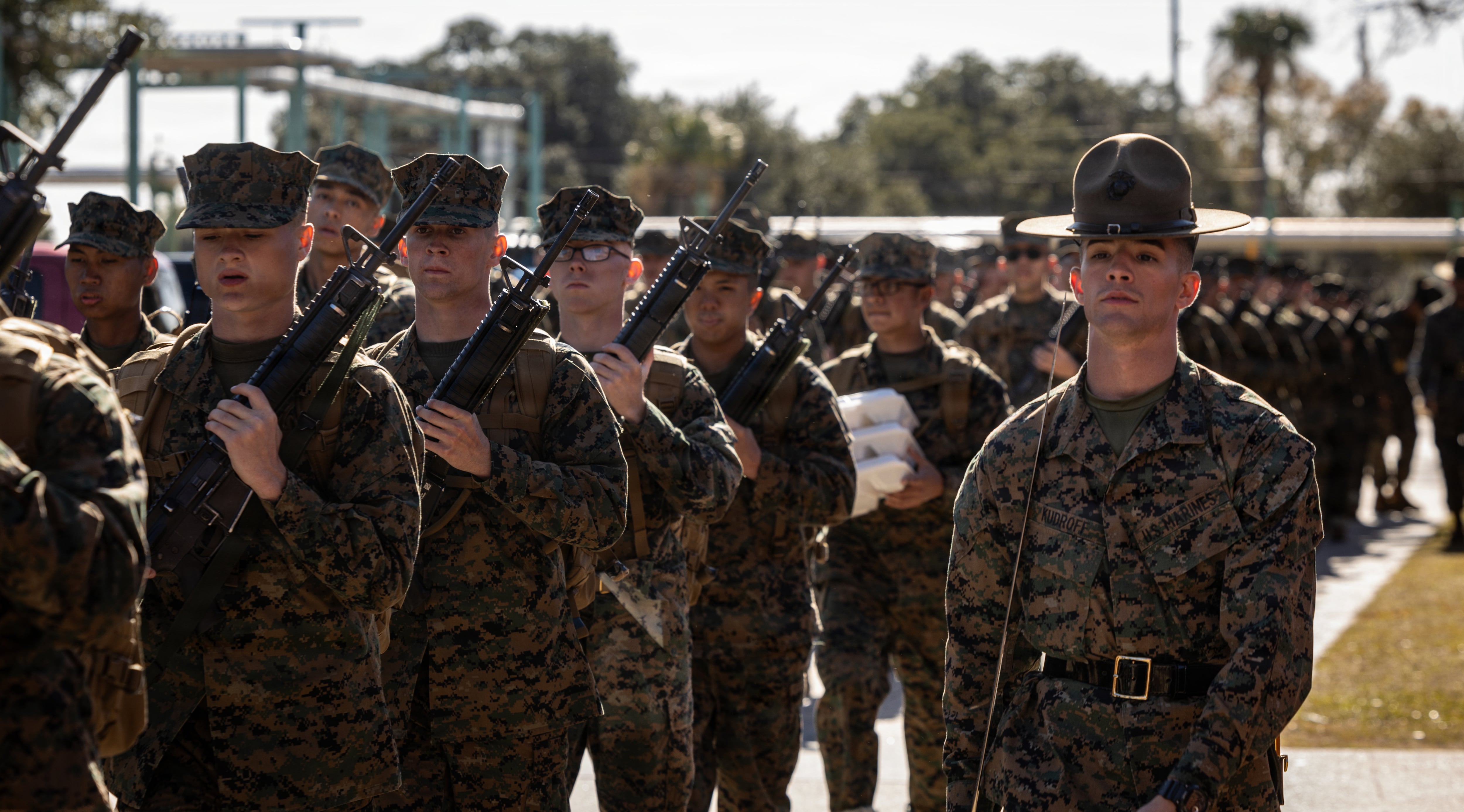As explosive ordnance disposal Marines pick up new post-war missions, they're looking for light, portable gear they can carry in their packs. The only thing holding back Marine Corps Explosive Ordnance Disposal right now is being able to get the right technology out to the field.
EOD technicians were some of the busiest Marines in the Corps during the wars in Iraq and Afghanistan, and with those large-scale missions came strong logistical support. Now as the service shifts toward a nimbler force focused on crisis response missions, Marines in the EOD field are on the hunt for new technologies they can transport on the fly.
"We have to move quickly and still have our core capabilities of being that quiet professional, but also have that capability of smashing you in the face," Maj. Curtis Smith, the Corps' EOD program officer, said Tuesday during a symposium for a symposium of EOD experts and contractors held Tuesday by the National Defense Industrial Association in Bethesda, Maryland.
As Marines prepare for more expeditionary missions without a lot of logistics support, they'll have to be innovative, he said. Lightweight robots that can fit in backpacks, back-packable robotics, lasers and X-ray equipment, for example, will are all needed to give EOD the operational punch it needs in the new environment.
"We're going to go back to our core concepts as the Marine Corps: we're probably going to be jumping off ships once again," Smith said. "We do that, we might not be taking vehicles, and that tells us there's a good chance we'll rely on black Cadillacs once again; that means taking what we need on our backs, something lightweight.
Shrinking budgets pose significant challenges in getting high-tech equipment from the drawing board to the field though, he said, and the pace of research and development of EOD technology simply out outstrips the ability to get new equipment out to Marines, he according to said.

Marines with 1st Explosive Ordnance Disposal Company, 1st Marine Logistics Group, I Marine Expeditionary Force, speak with notional village leaders during a training exercise at Marine Corps Air Ground Combat Center Twentynine Palms, Calif., where they were tasked with disposing of enemy weapons caches and Tactical Recovery of Aircraft and Personnel missions, June 17, 2015. The Marines of 1st EOD Co. are preparing for an upcoming deployment with Special Purpose Marine Air Ground – Crisis Response – Central Command, where they will participate in a fast reaction force role.
Photo Credit: Cpl. Carson Gramley/Marine Corps
"It just takes too long to get something done," Smith said. "Our acquisitions process needs to be put in the proper direction because it's not as flexible and open to change as we need it to be."
Capt. Andrew Cheatum, commander of 1st EOD Company — known as "America's EOD Company" —commander, 7th Engineer Support Battalion sees that problem at the ground level when his Marines often have to choose between more beans, bullets or batteries for EOD equipment. The Marines know what they need smaller, lighter and more durable gear, he said. But they but often find themselves maneuvering heavy, bulky equipment gear as they support crisis response Special Purpose – Marine Ground Task Force – Crisis Response operations missions.
"You can put up an urgent needs statement, but it takes a long time to get anything," Cheatum said. "We should be pushing up our needs, but instead it's all slowly rolling down."
The 1st EOD Company, also known as "America's EOD Company," has seen the need for new technologies on an almost daily basis while providing theater security cooperation engagements for SPMAGTF-CR.
Executive officer Chief Warrant Officer 2 Juan Rodriguez, 1st EOD Company's executive officer, just returned from a four-month deployment to Iraq to assist Iraqi EOD personnel in anti-terrorism force protection and counter-improvised explosive training. Prior to that, the unit was in Jordan, conducting a subject matter expert exchange with the Jordanian military on EOD tactics, equipment recommendations, and post-blast analysis.
"When you're rolling around in a large vehicle, the weight and size of equipment isn't an issue," Rodriguez said. "But what we need now is equipment that's man-portable and flyaway, since we're becoming more air-centric."
For example, Rodriguez said EOD techs rely on Marines have had to buy commercial X-ray equipment they buy off the shelf. While it on the economy through open purchase requests. The kit weighs less than 15 pounds, fits in a pack and can be sits easily in a backpack and can be carried on nearly all their missions, but it's also expensive.
The iRobot 310 SUGV is also in high-demand highly needed, Rodriguez said. The It weighs 30-pound device s, also fits into a backpack, and can help Marines detect improvised explosive devices from a safe distance. and can perform a wide range of tasks. It was available to the Marines on a limited basis in Afghanistan, but was never established as a program of record.
Nearly a year Twenty-one months [[They just left in October. GH]] after Marines handed off Camp Leatherneck to Afghan National Security Forces, the EOD field is changing rapidly still maintains high operational tempo. Marine EOD techs like Rodriguez are helping the Iraqis to fight the Islamic State group, teams in South America are helping Peruvians combat drug cartels and local insurgents, and they're sharing lessons learned in a decade-plus of war with African allies battling extremists — all while remaining on standby for embassy evacuations or other crisis response missions. is just as busy, if not more so.
That makes getting the gear they need vital to carrying out successful operations, Smith said.
"The mission's the same, but what's going to change is how we support that mission," he said. "This means we need to be lean, means we need to be mobile, means we need to get back to our point of being expeditionary."





